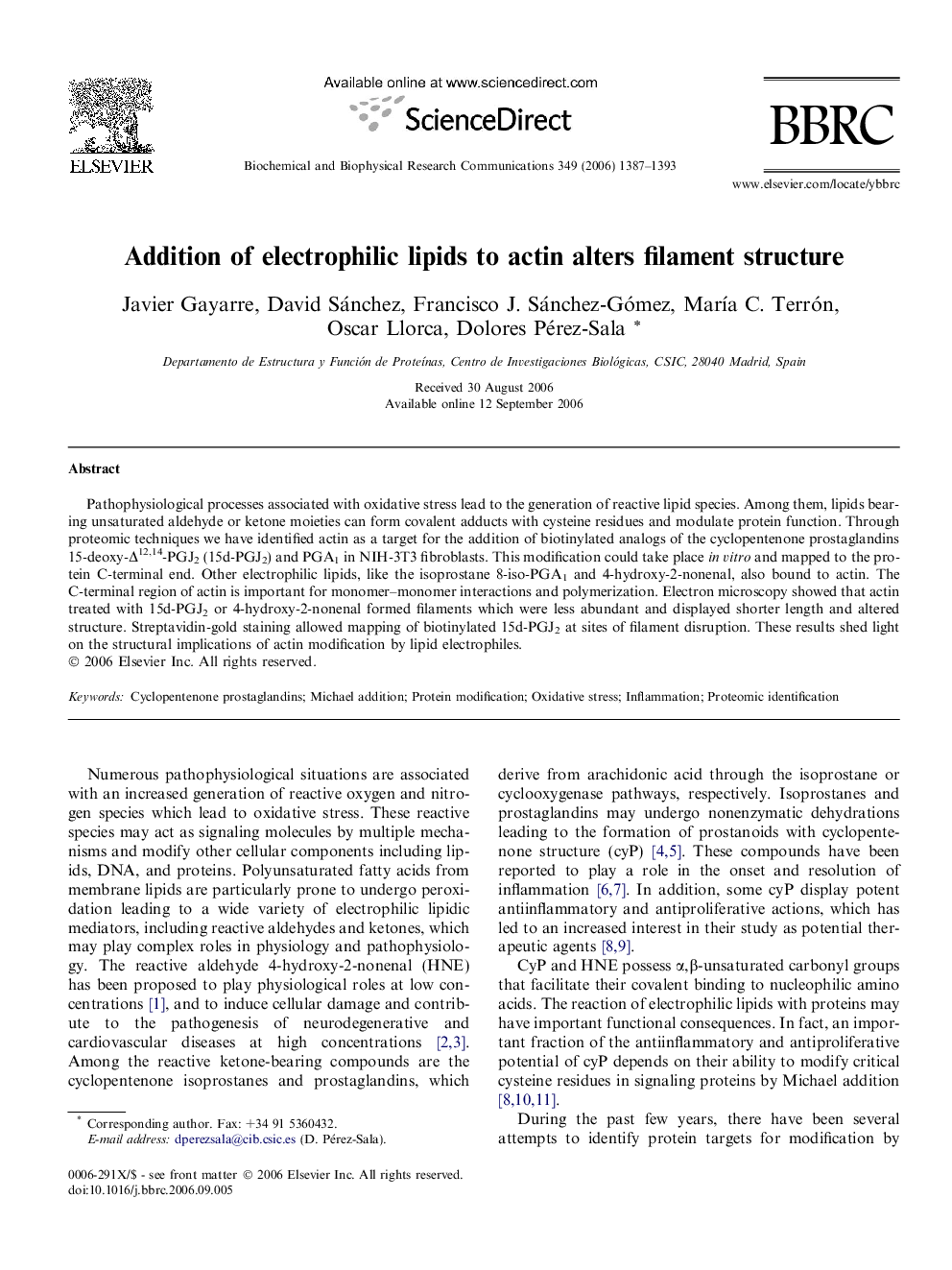| کد مقاله | کد نشریه | سال انتشار | مقاله انگلیسی | نسخه تمام متن |
|---|---|---|---|---|
| 1938993 | 1050751 | 2006 | 7 صفحه PDF | دانلود رایگان |

Pathophysiological processes associated with oxidative stress lead to the generation of reactive lipid species. Among them, lipids bearing unsaturated aldehyde or ketone moieties can form covalent adducts with cysteine residues and modulate protein function. Through proteomic techniques we have identified actin as a target for the addition of biotinylated analogs of the cyclopentenone prostaglandins 15-deoxy-Δ12,14-PGJ2 (15d-PGJ2) and PGA1 in NIH-3T3 fibroblasts. This modification could take place in vitro and mapped to the protein C-terminal end. Other electrophilic lipids, like the isoprostane 8-iso-PGA1 and 4-hydroxy-2-nonenal, also bound to actin. The C-terminal region of actin is important for monomer–monomer interactions and polymerization. Electron microscopy showed that actin treated with 15d-PGJ2 or 4-hydroxy-2-nonenal formed filaments which were less abundant and displayed shorter length and altered structure. Streptavidin-gold staining allowed mapping of biotinylated 15d-PGJ2 at sites of filament disruption. These results shed light on the structural implications of actin modification by lipid electrophiles.
Journal: Biochemical and Biophysical Research Communications - Volume 349, Issue 4, 3 November 2006, Pages 1387–1393